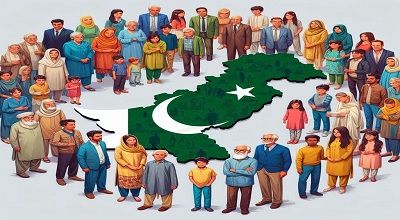Effects of Population in Pakistan
The effects of the population in Pakistan are varied and complex. The population of Pakistan has significant effects on various aspects of the country’s socio-economic and political landscape.
Some of the key effects of population in Pakistan include:
- The strain on resources: Overpopulation puts a strain on resources such as food, water, and energy, leading to shortages and higher prices.
- Environmental degradation: Overpopulation can lead to environmental degradation, including deforestation, air and water pollution, and loss of biodiversity.
- Poverty and illiteracy: Overpopulation can perpetuate the cycle of poverty and illiteracy, as people who are poor or have limited education are less likely to have access to family planning services and may not have the knowledge or resources to control their fertility.
- Unemployment and social unrest: Overpopulation can increase the competition for jobs and opportunities, leading to unemployment and social unrest. It can also create a breeding dichotomy between classes and increase dependence on foreign aid.
- Urbanization and infrastructure: Overpopulation can cause rapid urbanization, as people migrate to the cities for better living standards. This can put pressure on the existing infrastructure and public services. Such as health, education, and transportation.
Note:
These are some of the major effects of population in Pakistan. However, there are also some possible solutions to address these challenges. Such as increasing access to family planning services, promoting education and economic development, improving governance and political stability, and raising awareness about the impacts of overpopulation.
What is the population of Pakistan?
According to the latest United Nations Data, the current population of Pakistan is estimated to be 235.82 million as of October 19, 2023. This is based on an interpolation of the 2021 census results, which recorded a population of 225.2 million as of July 1, 2021. Pakistan is the world’s fifth-most populous country and has a relatively high growth rate of 1.98% in 2023. The population of Pakistan is composed of various ethnic groups, languages, and religions, making it a diverse and multicultural nation.
